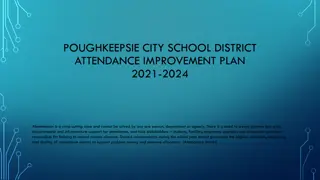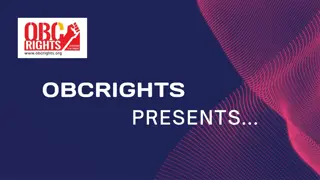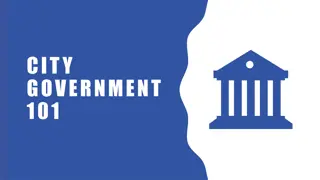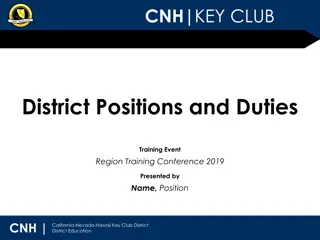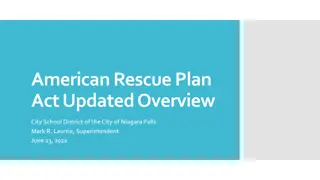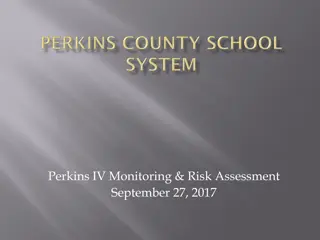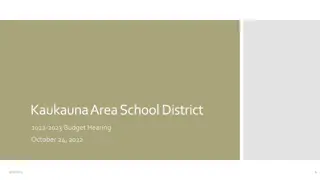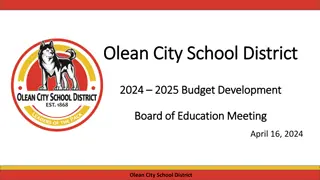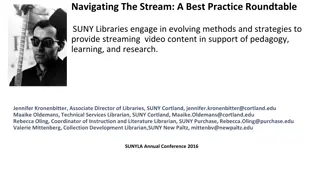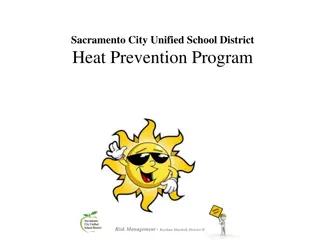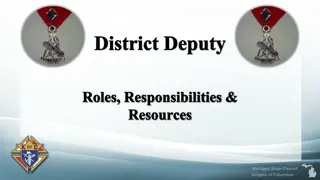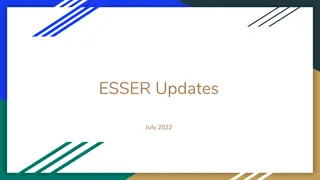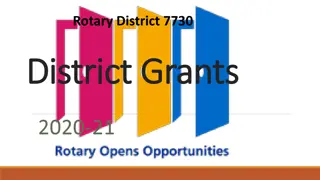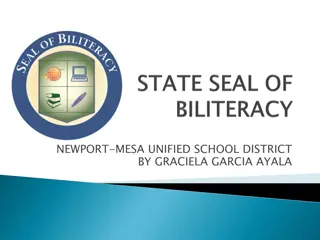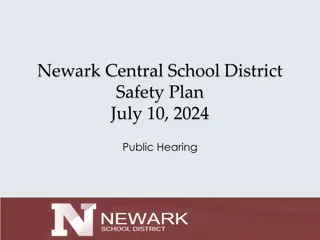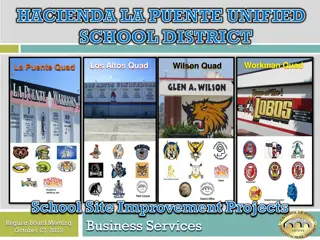Challenges and Needs in Cortland Enlarged City School District
The Cortland Enlarged City School District faces challenges in achieving desired levels of student achievement, graduation rates, and student engagement. Disparities exist among different learner groups, and student health needs improvement. High community expectations drive the need for continuous improvement to ensure high levels of learning for all students to succeed in their adult lives. The district must address these challenges to meet the demands of a changing job market that requires postsecondary education.
Download Presentation

Please find below an Image/Link to download the presentation.
The content on the website is provided AS IS for your information and personal use only. It may not be sold, licensed, or shared on other websites without obtaining consent from the author. Download presentation by click this link. If you encounter any issues during the download, it is possible that the publisher has removed the file from their server.
E N D
Presentation Transcript
2016-2017 Cortland Enlarged City School District
2016-2017 Our Continuous Improvement Journey
2016-2017 High Levels of Learning for All Students
Our Challenge Our 3-8 achievement is not what we want it to be Our graduation rate is not what we want it to be There are gaps between the achievement of different groups of learners in our district Levels of student engagement are not what we want them to be Our students are not as healthy as we want them to be Our community has high expectations
High Levels of Learning for All Students The Why
Public Education Schools are here to prepare children to be adults. As educators, it is our job to ensure our students learn the essential academic skills, knowledge, and behaviors needed to succeed in their adult life.
The Need In 2012, about one-third of jobs in America were in occupations that typically require postsecondary education for entry. U.S. Bureau of Labor and Statistics. (2013). Education and training outlook for occupations, 2012-2022.
The Need By 2020, 65 percent of ALL jobs in the economy will require postsecondary education and training beyond high school. Carnevale, Smith & Strohl. (2013). Recovery: Job growth and education requirements through 2020
The Need Family in poverty Child grows up in poverty The Poverty Cycle Is significantly disadvantaged in education and skills Fails to escape the poverty cycle Struggles to get a job
The Need In Cortland: Our 3-8 achievement is not what we want it to be Our graduation rate is not what we want it to be There are gaps between the achievement of different groups of learners in our district Levels of student engagement are not what we want them to be
Our Goal To create a systematic process that ensures every child receives additional time and support needed to learn at high levels.
The Mission To ensure high levels of learning for all students. High levels means: High school plus Grade-level or better
Fundamental Assumptions Not all students learn in the same way. Not all students learn at the same speed. Some students lack prior knowledge and skills. Some students lack proper behaviors. Some students have a home life that is counterproductive to academic success.
Our Dilemma Our traditional school system was not designed to ensure that all students learn at high levels. Professional isolation Failure was acceptable Few students went to college Schools and teachers sorted students
Our Dilemma The main function of school is to prepare for the duties of life that a small proportion of all the children in the country a proportion small in number, but very important to the welfare of the nation who show themselves able to profit by an education prolonged to the eighteenth year, and whose parents are able to support them while them remain so long at school. -National Education Association. (1894). Report of the Committee of Ten on Secondary School Studies.
Our Dilemma The deep structure of tracking remains uncannily robust. Most middle and high schools still sort students into classes at different levels based on judgements of students ability . -Oakes. (2005). How Schools Structure Inequality
Our Dilemma This sorting continues to disadvantage those in lower track classes. Such students have less access to high-status knowledge, fewer opportunities to engage in stimulating learning activities, and classroom relationships less likely to foster engagement with teachers, peers, and learning. -Oakes. (2005). How Schools Structure Inequality
Our Dilemma As educators, we have a tremendous tendency, often subconscious, to perpetuate that system in which we were successful. How different, honestly, is your current school from the schools you attended? How much has the world change in that same amount of time?
We Know What Works We expect the average student to academically improve 0.40 (effect size) by staying alive and attending school for one year. -Hattie. (2008). Visible Learning: A Synthesis of Over 800 Meta-Analyses Relating to Achievement.
The Home Effect Just living and going to school Socioeconomic status: Home environment: Parental involvement: .40 .57 .57 .51 -Hattie. (2008). Visible Learning: A Synthesis of Over 800 Meta-Analyses Relating to Achievement.
Under Our Control In Our Control Students in schools where teachers and administrators who named factors inside their control as having the most significant contribution on student success had three times higher achievement than those that named outside factors. Outside factors
More Powerful than Poverty There are at least 30 things we can do that have a more powerful impact on learning than poverty. -Hattie. (2008). Visible Learning: A Synthesis of Over 800 Meta-Analyses Relating to Achievement.
More Powerful than Poverty Just living and going to school Socioeconomic status: Collective teacher efficacy Student monitoring of learning Response to intervention Feedback Formative assessment Discussion .40 .57 1.57 1.44 1.07 1.13 .90 .82
More Powerful than Poverty Just living and going to school Socioeconomic status: Collective teacher efficacy Student monitoring of learning Response to intervention Feedback Formative assessment Discussion .40 .57 1.57 1.44 1.07 1.13 .90 .82
The Future Why do our schools need to change? It s not because of federal and state mandates. It s not because our district has a label.
The Future Why do our schools need to change? It s not because of federal and state mandates. It s not because our district has a label. It s because we want our students to be ready for their future.



